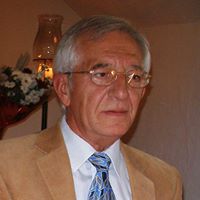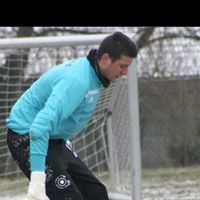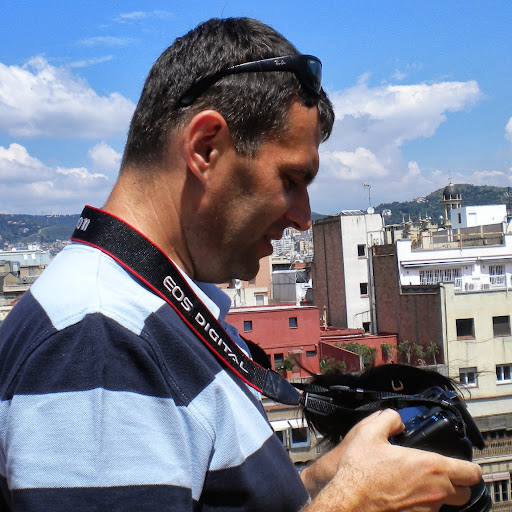Tamas Te Nemeth
age ~60
from Los Altos Hills, CA
- Also known as:
-
- Pamas Nemeth
- Nemeth Tamas
Tamas Nemeth Phones & Addresses
- Los Altos Hills, CA
- Round Rock, TX
- Redwood City, CA
- San Jose, CA
- 528 Jackson Dr, Palo Alto, CA 94303
- San Ramon, CA
- Concord, CA
- Lancaster, CA
- Fullerton, CA
- Salt Lake City, UT
Resumes

Tamas Nemeth
view sourceLocation:
United States
Name / Title
Company / Classification
Phones & Addresses
Prime Growth Holdings LLC
Real Estate Investment · Holding Company
Real Estate Investment · Holding Company
7083 Hollywood Blvd, Los Angeles, CA 90028
5565 Satinleaf Way, San Ramon, CA 94582
5565 Satinleaf Way, San Ramon, CA 94582
Us Patents
-
Shot Gather Data Beamer And Debeamer
view source -
US Patent:8301385, Oct 30, 2012
-
Filed:Jun 29, 2010
-
Appl. No.:12/826176
-
Inventors:Chaoshun Hu - San Ramon CA, US
Yue Wang - Danville CA, US
Tamas Nemeth - San Ramon CA, US -
Assignee:Chevron U.S.A. Inc. - San Ramon CA
-
International Classification:G01V 1/28
-
US Classification:702 14, 702 16, 702 17, 702181, 703 2, 367 38, 367 53
-
Abstract:Beamed data can be obtained from shot gather data, and debeamed data can be obtained from beamed data. Shot gather data for a geophysical volume of interest in a first domain and/or beamed data in a third domain may be received. The first domain has a component relating to seismic wave propagation time and a spatial component relating to lateral spacing. The third domain has a component relating to local plane wave arrival time at a beam center surface location and a component relating to plane wave arrival directions. Data may be transformed between the first domain and a second domain. The second domain has a frequency component and a spatial component corresponding to the spatial component of the first domain. A forward or reverse transform may be applied to transform shot gather data in the first domain to/from beamed data in the third domain.
-
System And Method For Attenuating Multiples In Seismic Data That Accounts For Beam Azimuth
view source -
US Patent:8326543, Dec 4, 2012
-
Filed:Nov 20, 2009
-
Appl. No.:12/623225
-
Inventors:Tamas Nemeth - San Ramon CA, US
Norman Ross Hill - Houston TX, US -
Assignee:Chevron U.S.A. Inc. - San Ramon CA
-
International Classification:G01V 1/02
-
US Classification:702 14, 702 5, 702127
-
Abstract:The present invention incorporates the use of model-driven and data-driven methodologies to attenuate multiples in seismic data utilizing a prediction model which includes multiply-reflected, surface-related seismic waves. The present invention includes beam techniques that account for beam azimuth, and convolving a predicted multiples beam with a segment of a modeled pegleg beam to obtain a convolved multiples beam. The convolved multiples beam can then be deconvolved to attenuate the multiples that are present in the original input beam.
-
System And Method For Data Compression Using A Field Programmable Gate Array
view source -
US Patent:8566376, Oct 22, 2013
-
Filed:Jul 30, 2010
-
Appl. No.:12/847243
-
Inventors:Tamas Nemeth - San Ramon CA, US
Oliver Pell - London, GB
Raymond Ergas - San Clemente CA, US -
Assignee:Chevron U.S.A. Inc. - San Ramon CA
-
International Classification:G06F 7/00
-
US Classification:708203
-
Abstract:A system and method for compressing and/or decompressing data uses a field programmable gate array (FPGA). In an embodiment, the method includes receiving data at the FPGA device, filtering the received data in a first dimension using a first logic structure of the FPGA device, storing the first filtered data in a memory of the FPGA device, filtering the received data in a second dimension using a second logic structure of the FPGA device, storing the second filtered data in the memory, quantizing the filtered data using a third logic structure of the FPGA device, encoding the quantized data using a fourth logic structure of the FPGA device to compress the data, and storing the encoded compressed data in a memory of the FPGA device.
-
Method For Identifying And Removing Multiples For Imaging With Beams
view source -
US Patent:20080294346, Nov 27, 2008
-
Filed:May 22, 2007
-
Appl. No.:11/751975
-
Inventors:Tamas Nemeth - San Ramon CA, US
Yue Wang - San Ramon CA, US
Fuhao Qin - Spring TX, US
N. Ross Hill - Houston TX, US -
International Classification:G01V 1/28
G06F 17/50 -
US Classification:702 17, 703 2
-
Abstract:The present invention incorporates the use of model-driven and data-driven methodologies to attenuate multiples in seismic data utilizing a prediction model which includes multiply-reflected, surface-related seismic waves. The present invention includes beam techniques and convolving a predicted multiples beam with a segment of a modeled pegleg beam to obtain a convolved multiples beam. The convolved multiples beam can then he deconvolved to attenuate the multiples that are present in the original input beam.
-
Method For Generation Of Images Related To A Subsurface Region Of Interest
view source -
US Patent:20100118651, May 13, 2010
-
Filed:Sep 24, 2009
-
Appl. No.:12/566252
-
Inventors:Wei Liu - San Ramon CA, US
Tamas Nemeth - San Ramon CA, US
Raymond Ergas - San Clemente CA, US
Oliver Pell - London, GB -
International Classification:G01V 1/28
-
US Classification:367 50
-
Abstract:A method and system for generating images of a subsurface region of interest. In general, one embodiment of the present invention includes establishing boundary conditions utilizing seismic data and initial conditions which include excitation from source locations in an earth model. Source wavefields are then propagated forward through the earth model to a maximum time, and saved at a plurality of checkpoints sparsely in time and also corresponding boundary values of the source wavefields at each time step are saved. Source wavefields are also propagated backward through the earth model from the maximum time utilizing the plurality of checkpoints when available and the saved boundary values at each time step. Receiver wavefields are propagated backward concurrently through the earth model from the maximum time. Imaging conditions are applied at selected time steps to both the backward propagated source wavefields and receiver wavefields and those wavefields are utilized to generate images related to the subsurface region.
-
System And Method Of Processing Seismic Data On A Co-Processor Device
view source -
US Patent:20120331191, Dec 27, 2012
-
Filed:Aug 29, 2012
-
Appl. No.:13/597466
-
Inventors:Oliver Pell - London, GB
Tamas Nemeth - San Ramon CA, US
Raymond Ergas - San Clemente CA, US -
Assignee:Chevron U.S.A. Inc. - San Ramon CA
-
International Classification:G06F 13/42
-
US Classification:710 68
-
Abstract:A system and method for processing seismic data on one or more co-processor devices that are operatively coupled to a host computing system via a communications channel. The compression of input data transmitted to the co-processor device and/or the size of the storage provided on the co-processor device may enhance the efficiency of the processing of the data on the peripheral device by obviating a bottleneck caused by the relatively slow transfer of data between the host computing system and the co-processor device or by the relatively slow transfer of data within the co-processor device between the co-processor information storage and the co-processor.
-
System And Method For Preventing Wellbore Interactions
view source -
US Patent:20220290559, Sep 15, 2022
-
Filed:Mar 12, 2021
-
Appl. No.:17/200677
-
Inventors:- San Ramon CA, US
Tamas Nemeth - Palo Alto CA, US
David C. Bartel - Houston TX, US
Zhishuai Zhang - Houston TX, US
Yunhui Tan - Houston TX, US
Joseph P. Stefani - San Ramon CA, US
James P. DiSiena - Houston TX, US
Dimitri Bevc - Houston TX, US
Kelly Hughes - Houston TX, US -
International Classification:E21B 47/135
E21B 47/107
G06N 3/04
G06N 20/00
E21B 49/00 -
Abstract:A method is described for predicting and preventing wellbore interactions at wells that are near the injection well. The method includes receiving fiber optics data; performing object detection by detecting object-like events in the fiber optic data; and sending instructions to a hydraulic fracturing system based on the object detection. The method is executed by a computer system.
-
System And Method Of Estimating Anisotropy Properties Of Geological Formations Using A Self-Adjoint Pseudoacoustic Wave Propagator
view source -
US Patent:20160291180, Oct 6, 2016
-
Filed:Mar 30, 2016
-
Appl. No.:15/084657
-
Inventors:- San Ramon CA, US
Kenneth Paul BUBE - Seattle WA, US
Raymond Andrew ERGAS - San Clemente CA, US
Tamas NEMETH - Palo Alto CA, US -
International Classification:G01V 1/30
G01V 1/28 -
Abstract:A method is described that includes receiving one or more seismic measurements corresponding to a plurality of source and receiver locations and providing an earth model for a geologic medium having a heterogeneous tilted symmetry axis. The earth model includes a nonzero shear velocity in the direction of the symmetry axis. The one or more seismic measurements are propagated over a plurality of time-steps in accordance with the earth model and a set of energy-conservative self-adjoint pseudoacoustic equations. The set of energy-conservative self-adjoint pseudoacoustic equations describes one or more seismic wavefields.

Tamas Nemeth
view source
Tamas Nemeth
view source
Anita Tamas Nemeth
view source
Tamas Nemeth
view source
Tamas Nemeth
view source
Tamas Nemeth
view source
Tamas Nemeth
view source
Tamas Nemeth
view sourceFlickr
Googleplus

Tamas Nemeth
About:
A könnyű nap tegnap volt.

Tamas Nemeth

Tamas Nemeth

Tamas Nemeth

Tamas Nemeth

Tamas Nemeth

Tamas Nemeth

Tamas Nemeth
Classmates

Tamas Nemeth | St. Paul A...
view sourceYoutube
Get Report for Tamas Te Nemeth from Los Altos Hills, CA, age ~60













